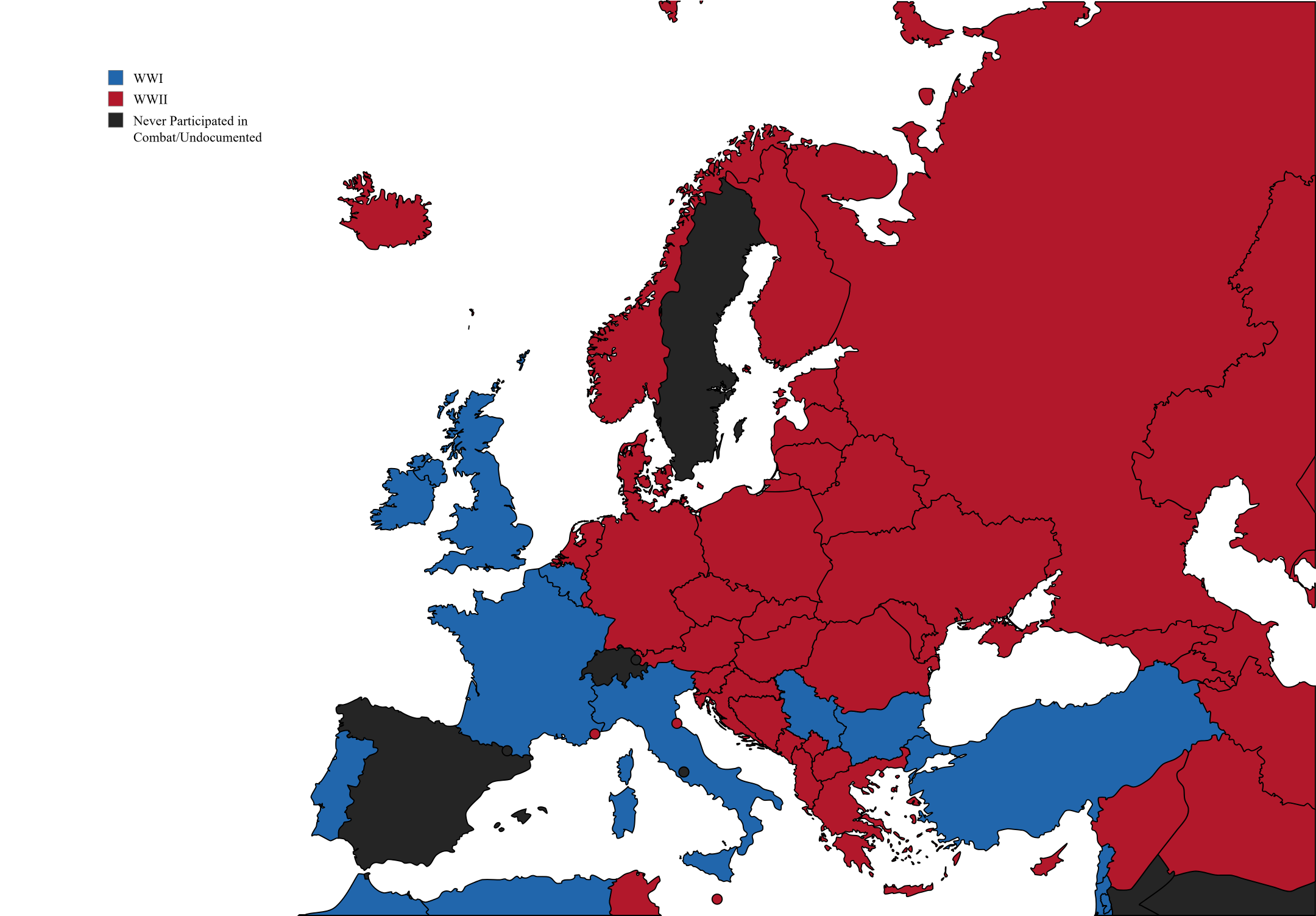Deaths in Europe During World Wars Map


Alex Cartwright
Senior Cartographer & GIS Specialist
Alex Cartwright is a renowned cartographer and geographic information systems specialist with over 15 years of experience in spatial analysis and data...
Geographic Analysis
What This Map Shows
This map visually represents the estimated number of deaths in various European countries during both the First and Second World Wars. It highlights a stark and sobering aspect of European history, allowing us to compare the human cost of these monumental conflicts across the continent. The data is presented side by side for each country, enabling viewers to quickly grasp which war had a more devastating impact in terms of human lives lost.
Deep Dive into Casualties in the World Wars
The First and Second World Wars were two of the most catastrophic events in human history, and the death tolls reflect the scale of the destruction. The First World War, fought from 1914 to 1918, resulted in an estimated 16 million deaths worldwide, with Europe bearing a large portion of that burden. The war caused not only military casualties but also civilian deaths due to starvation, disease, and genocide, particularly in Eastern Europe. Countries such as Serbia, for instance, suffered staggering losses, with estimates indicating about 1.1 million deaths, a significant percentage of its population at the time.
Interestingly, the Second World War, which lasted from 1939 to 1945, had an even more horrifying death toll, with estimates ranging from 70 to 85 million people globally. Europe again faced the brunt of this conflict, with countries like the Soviet Union experiencing unprecedented losses, with estimates reaching around 27 million deaths, including both military and civilian casualties.
What's fascinating is that these numbers tell not only a tale of war but also of resilience and recovery. While some nations faced massive losses, others, like the United Kingdom, although suffering significant military casualties, managed to maintain their civilian population relatively intact compared to Eastern European nations.
In addition to the sheer numbers, the impact of the wars varied greatly by region and country. For instance, Western Europe, while not immune to the horrors of the Second World War, had a different experience compared to Eastern Europe. Countries like Poland and the Baltic states faced brutal occupations, leading to immense civilian populations being targeted and exterminated.
The demographic shifts caused by these wars are still felt today. Countries that lost a significant percentage of their population had to grapple with loss and rebuilding. For example, Germany experienced not only military casualties but also a significant civilian toll due to bombing raids and the consequences of post-war displacement.
Regional Analysis
Breaking down the map by regions reveals significant disparities in the impact of the two World Wars. In Southern Europe, countries like Italy experienced heavy military losses during WWI and faced considerable civilian suffering during WWII due to Allied bombings and the resultant upheaval. Comparatively, Northern European nations like Sweden managed to remain neutral during both conflicts, resulting in far fewer casualties.
In Eastern Europe, the devastation becomes particularly acute. The map starkly shows how nations like Poland and Ukraine suffered immensely during both conflicts, facing not only military losses but also mass atrocities against civilians. The Holocaust and the man-made famines in the Soviet Union exacerbated the death toll in these regions, creating a complex legacy of suffering that resonates through generations.
Interestingly, the map indicates that some countries that faced significant losses in WWI, such as Romania, also bore heavy costs in WWII, suggesting that the two wars had compounding effects on their populations and histories.
Significance and Impact
Understanding the death tolls from the World Wars is crucial not just for historical context but also for recognizing the long-term impacts on European societies. The loss of millions of lives shaped political boundaries, influenced international relations, and altered demographics in profound ways. For example, the post-WWII era saw a significant movement towards European integration, partly as a response to the devastation wrought by these wars.
Moreover, these historical events continue to inform contemporary discussions about war, peace, and reconciliation. The lessons learned from the atrocities of the past are vital for current and future generations as they navigate complex geopolitical landscapes. The map serves as a stark reminder of the cost of conflict and the importance of striving for peace, as the echoes of these wars still shape policies and societal structures across Europe today.
In conclusion, this map not only serves as a historical reference but also as a poignant reminder of the human cost of war. As we look at these figures, we must remember the lives behind the numbers, ensuring that the lessons of the past guide us towards a more peaceful future.
Visualization Details
- Published
- September 28, 2025
- Views
- 56
Comments
Loading comments...